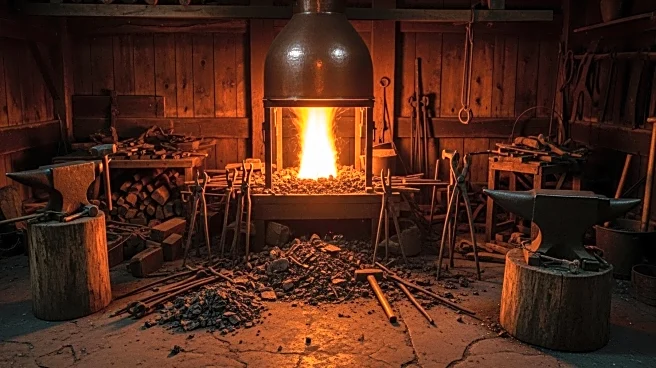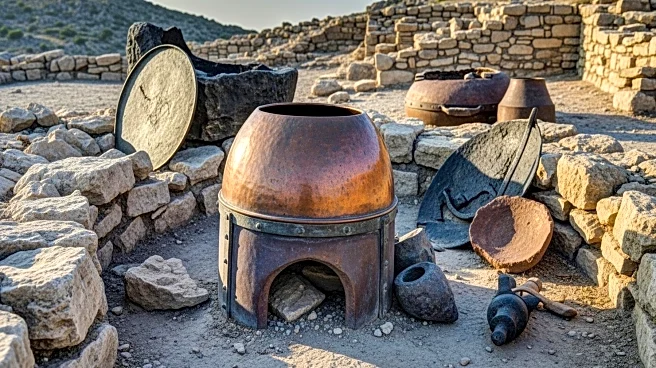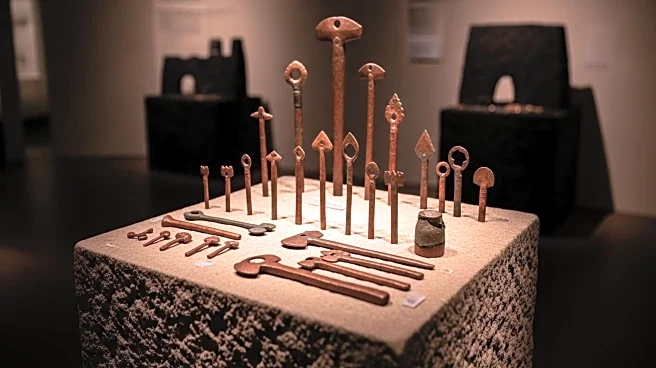What is the story about?
What's Happening?
A 3,000-year-old site in Kvemo Bolnisi, Georgia, has revealed surprising clues about the dawn of the Iron Age. Researchers from Cranfield University reexamined old finds using modern techniques, suggesting that what was once thought to be an early iron-smelting site was actually a copper workshop utilizing iron oxides as a flux. The findings, published in the Journal of Archaeological Science, indicate that smelters were experimenting with iron-rich minerals to boost copper yields, potentially leading to the development of extractive iron metallurgy. This discovery challenges previous assumptions and offers new insights into ancient technological advancements.
Why It's Important?
The research reframes ancient technological agency, suggesting that the metallurgists of Kvemo Bolnisi recognized iron oxide as distinct and manipulable, testing it under furnace conditions. This experimentation may have seeded the later invention of iron smelting. The study highlights the importance of understanding how human technologies evolve, offering a concrete instance where trial and error in one domain incubated a significant leap in another. The findings suggest that the transition to iron smelting was not a single eureka moment but a distributed process of trial, error, and incremental learning embedded in established craft traditions.
What's Next?
Researchers are cautious about drawing conclusions and acknowledge that this is a reinterpretation of older material. They suggest that copper smelting sites elsewhere should be reexamined for similar traces. If Kvemo Bolnisi is not unique, the narrative of iron's emergence will need to shift. The transition to true iron smelting may have been a gradual process rather than a sudden technological revolution. Further research is needed to accumulate more data on the geography, chronology, and technology of early iron smelting activities.
Beyond the Headlines
The study poses broader questions about how human technologies evolve, suggesting that the rise of the Iron Age was shaped by everyday metallurgical problem-solving rather than isolated breakthroughs. It challenges the notion of sequential technological advancements, weaving copper and iron technologies together.
AI Generated Content
Do you find this article useful?















